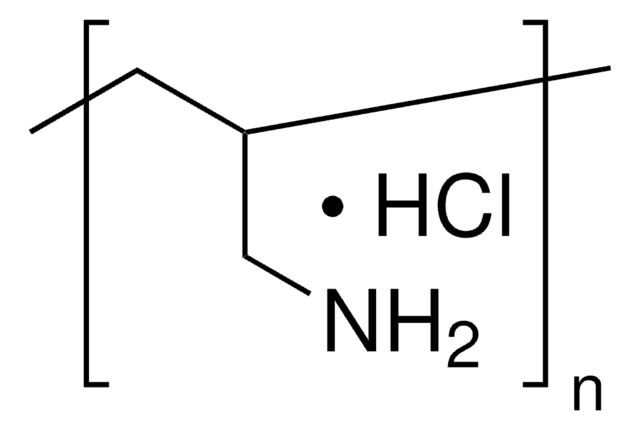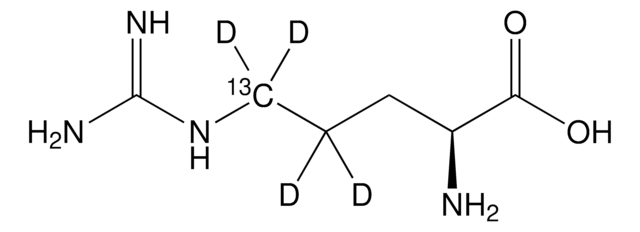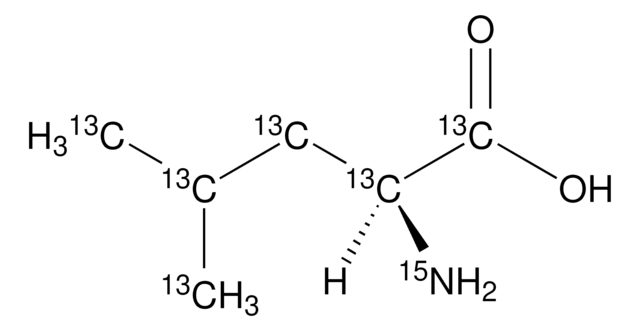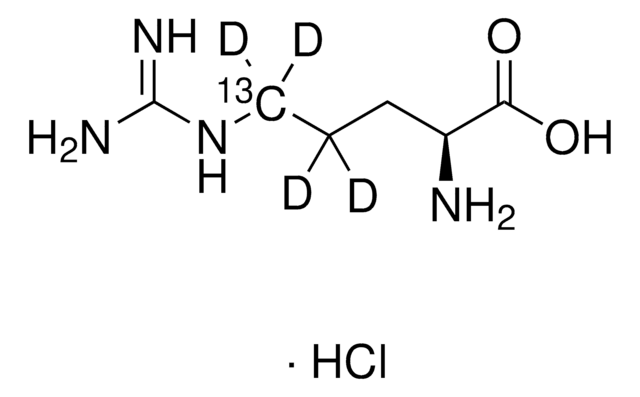608033
L-Arginine-13C6,15N4 hydrochloride
99 atom % 13C, 99 atom % 15N, 95% (CP)
Sinônimo(s):
SILAC Amino Acid, (S)-(+)-2-Amino-5-[(aminomethyl)amino]pentanoic acid-13C6,15N4 hydrochlordie, 13C and 15N Labeled ARG, 13C and 15N Labeled arginine hydrochloride
About This Item
Produtos recomendados
pureza isotópica
99 atom % 13C
99 atom % 15N
Nível de qualidade
Ensaio
95% (CP)
forma
solid
atividade óptica
[α]20/D +22°, c = 12 in 10% HCl
composição
L-isomer, 97%
técnica(s)
bio NMR: suitable
protein expression: suitable
pf
226-230 °C (dec.) (lit.)
alteração de massa
M+10
cadeia de caracteres SMILES
Cl.[15NH2][13C@@H]([13CH2][13CH2][13CH2][15NH][13C]([15NH2])=[15NH])[13C](O)=O
InChI
1S/C6H14N4O2.ClH/c7-4(5(11)12)2-1-3-10-6(8)9;/h4H,1-3,7H2,(H,11,12)(H4,8,9,10);1H/t4-;/m0./s1/i1+1,2+1,3+1,4+1,5+1,6+1,7+1,8+1,9+1,10+1;
chave InChI
KWTQSFXGGICVPE-YAUSPDTOSA-N
Categorias relacionadas
Aplicação
Embalagem
produto relacionado
Código de classe de armazenamento
11 - Combustible Solids
Classe de risco de água (WGK)
WGK 3
Ponto de fulgor (°F)
Not applicable
Ponto de fulgor (°C)
Not applicable
Escolha uma das versões mais recentes:
Já possui este produto?
Encontre a documentação dos produtos que você adquiriu recentemente na biblioteca de documentos.
Os clientes também visualizaram
Conteúdo relacionado
Protein structure provides valuable information that can be used to infer protein function. The study of protein structure and mapping of protein interactions, expression levels, and location enables the identification of disease biomarkers and potential drug targets for therapeutic treatment.
Nossa equipe de cientistas tem experiência em todas as áreas de pesquisa, incluindo Life Sciences, ciência de materiais, síntese química, cromatografia, química analítica e muitas outras.
Entre em contato com a assistência técnica












